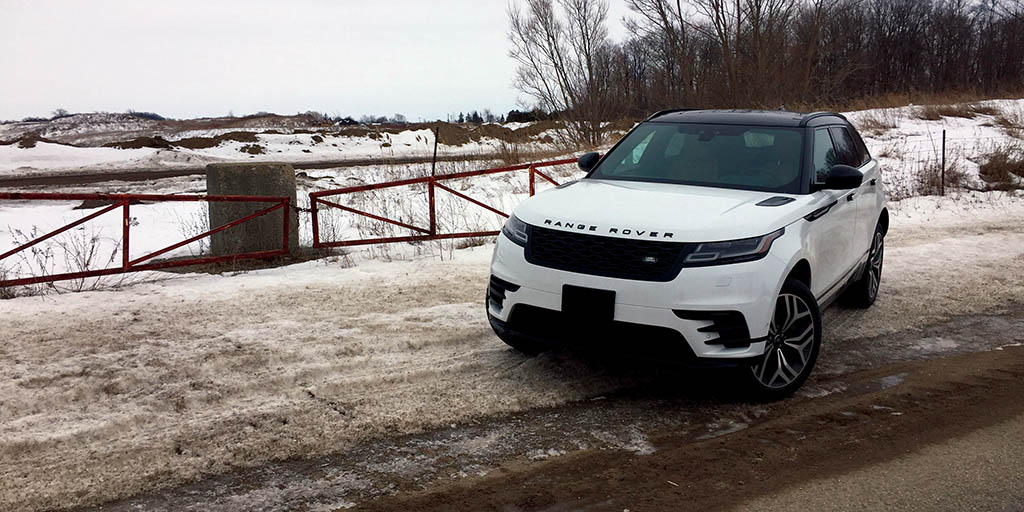Motoring - Luxury and durability: The 2018 Range Rover Velar P380
 CREDIT: NAUMAN FAROOQ
CREDIT: NAUMAN FAROOQThe Range Rover Velar P380, is the perfect car in terms of durability, style and reliability.
A few weeks ago, I had mentioned that the Lincoln Navigator was the first full-size premium luxury SUV, when it made its debut back in 1998, but it wasn’t the first ever SUV to offer luxury – that crown belongs to the original Range Rover, which was launched back in 1970.
Over the past, nearly 50 years, there has been a lot of different Range Rover models offered by Land Rover, but their latest one is possibly its most interesting and takes a page out of its history books.
It’s called the Velar and the name links back to the prototypes for the original Range Rover back in 1969.
The latest Velar, sits in the Range Rover lineup above the Evoque, but just below the Sport.
Underneath its pretty skin, it shares a platform and drivetrain with the Jaguar F-Pace, but the two vehicles look entirely different - and while the F-Pace is largely an SUV for the streets, the Velar has proper off-road tech such as adjustable ride height, and modes to get you out of a tough situation.
So, let’s explore the Velar in a bit more detail.
Styling: If you’re the sort who would buy an SUV purely based on how it looks, than you would love the Velar. I spent about two weeks with a Velar and I couldn’t come up with a single angle that made it look bad.
This is a very stylish SUV, the perfect vehicle for pulling up at the yacht club.
However, I do think it is overstyled in one area and that is with its door handles.
The Velar has door handles that pop in and out and are motorized. That is all very good, on a warm, summer’s day, but in our winters, those door handles often get stuck in the outward position – which can be very annoying.
Interior: Aesthetically, the interior is just as pleasing to the eyes, as the exterior. This is a beautifully laid out cabin, which has plenty of space and the nicest seats in the business. Furthermore, it has all the tech you’ll ever need, such as navigation, Bluetooth integration, a great stereo system, heads-up display and even massaging seats. If there is a gripe, it is with its multiscreen system, because the Velar has barely any actual buttons, so everything is controlled through the two screens – that can get annoying, as sometimes you’ll first have to change the mode, and then use the same knobs to select different menu items – which can get very confusing. If you buy one, pay a lot of attention during the delivery, to learn all this vehicle’s ins and outs.
Powertrain: Currently, the Velar is offered with two drivetrains, a 2.0 litres, four-cylinder, turbo diesel, that produces 180 horsepower. Or, you can have the motor I had in my tester, the supercharged 3.0 litres V6, that produces 380 horsepower and 332 pounds per foot of torque. Power is sent to all-wheels via an eight-speed automatic gearbox. Step on the accelerator firmly, and you’ll sprint from 0 to 100 kilometres per hour in just 5.7 seconds, on your way to an electronically limited top speed of 250 kilometres per hour– very impressive numbers for a 2098 kilogram vehicle. I just wish it sounded good, when being pushed – it whines, rather than roars.
Driving Dynamics: Unlike the F-Pace, the Velar is tuned to be good, both on-road and off-road – so it has to compromise. So, while it handles well on the road, the Velar is not as nimble as the F-Pace. Like a proper Range Rover, the Velar has different drive modes, for various sticky situations, and adjustable ride height – both of which came in handy, for the time I got the vehicle stuck in thick snow. After finding the right drive mode, I just used the power on hand and the vehicle simply dug itself out – which was amazing, because I didn’t think any vehicle could get itself out of the situation I had accidently gotten it in. So, the Velar is a real Range Rover and not a product of just the marketing department. It might look great in the city, but it can still cut through the tough stuff.
Fuel Economy: Sure, a vehicle of this size, weight and power, will not be very efficient. I averaged 12.9 litres per 100 kilometres during my test week, which is not too bad. It did drink premium fuel only, so running costs are high, but then, you are buying a premium luxury vehicle. I just wish it had a larger fuel tank, at 60-litres, it does go through that quite quickly, which means, you have to visit your local gas station quite often!
Pricing: The base, diesel Velar (D180) is yours from $62,000. The petrol version (P380) starts from $69,900. My very loaded tester, which had the R-Dynamic package and a few extra goodies, was priced at around $83,000.
Verdict: I thought the Velar would be more of a fashion accessory, rather than a proper off-roader, but it managed to do both roles very well. So, if you’re in the market for a dynamic, attractive SUV, the Velar should be towards the top of your list.














